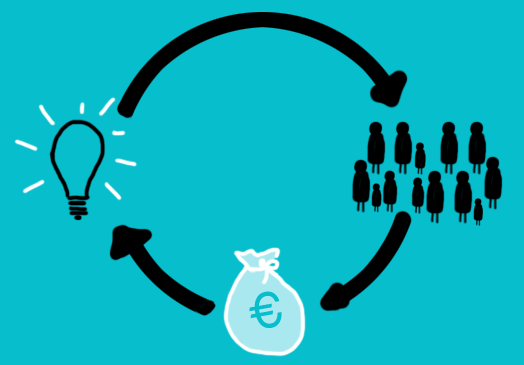There are many factors that matter when boosting SEO on your site, but as always, some are more important than others.
Search Engine Optimization or SEO in short is a term that encapsulates everything you need to do to improve your web site’s ranking position in the various search engines. This includes configuration settings you have to apply on the website (that’s on page SEO) and techniques you can use outside the boundaries of the website (that’s off page SEO).
Is on-page SEO more important than off-page SEO?
To achieve maximum exposure in the search engines and keep your users happy you need both off-page SEO and on-page SEO. In my opinion on page SEO is more important and I will explain below why.
1) ‘Speak’ the search engines language: It makes more sense to start with on-page SEO and get it right rather than trying to convince search engines to give you better ranking with off page SEO. Search engines are computer programs (software) and they understand a particular language. With SEO and especially on page SEO you ‘speak’ their language and your goal is to help them understand what you website is about. In other words the more signals you can give them, the more are your chances of achieving better rankings.
2) On Page SEO is about the user as well: Never forget that your primary target is to keep your users happy. Off Page SEO may bring traffic to the website but if it is not setup correctly, if it is not user friendly the results will be disappointing.
3) Many websites get it wrong: It’s amazing but it is true that the majority of websites today are not optimized for search engines. Despite the plethora of information about SEO many website owners believe that it does not worth to even do SEO and they quit before starting. For those cases on-page SEO has a lot to offer both in terms of usability but in terms of traffic as well.
4) On Page SEO is sometimes all you need: If you are running a website for a small business and you need to get local customers searching for various terms on Google then on page SEO is all you need to do.
5) Off page SEO comes after on page SEO: In order to start thinking on how you can promote your website you need to be sure that the website is optimized and in good condition. So the first step is to work with on-site SEO first and then go off-site.
5 on page SEO techniques for better rankings
Now that the theory about SEO and importance of on-page SEO is justified, let’s move on to the practical part.
There are many on page SEO techniques and not only 5, but for the purpose of this post I will explain below what I think are the absolute settings you have to apply on your website today. I strongly suggest that you also read (links will open in a new window):
1. Content comes first
A website with brilliant content can do great with or without SEO, a website with bad content will not survive with or without SEO, a website with good content can become even better with SEO!
So, what is considered good content?
Original Content (articles, text, images, videos, presentations, infographics, comments etc.) – No copies or re-writes of existing articles
Content published on your website first – Even if it’s your own content, if you have already published it on another website then it’s not good for your site.
Content that includes text as well – Try to have text to accompany your non-text content. For example if you post videos on your website try to add a text description as well. If you add images try to describe in words what the image is all about.
Content that is useful – Don’t publish content for the sake of publishing. Before hitting the publish button make sure that what goes live adds value to your website.
Content that is well researched – Users don’t want to read quickly prepared posts and neither does search engines. If you are writing about a certain topic or answering a question make sure that what you write is justified and covers both sites of a story. Long articles are proven to rank better than short articles.
Posting frequency – 2 things are important when it comes to posting frequency. First is to have fresh content on your website and second to establish a publishing strategyand stick to it.
2. Page titles, description and formatting
This is SEO 101 but very important as well. When search engines are reading your pages among the things they check includes the page title, the description of the page, the major headings and images. They do so because they need to understand what the page is all about and then based on other factors as well (off page SEO, domain authority, competition etc.), they will place your page in a position in their index.
Page titles – Each page must have a unique title that will help both search engines and users understand what the page is about. A page with title “On Page SEO Tips” is better than a page with title “index.html”.
Descriptions – The page description is what the searcher will see in the search engine results page. So it has to be descriptive, up to 150 characters and unique for each page. It’s your opportunity to advertise your page and convince the searcher to click your link and visit your website rather than selecting one of the other links.
Formatting – A page needs to be properly formatted. Think of it like a report which needs to have a heading (h1) and sub headings (h2). Important parts of the report are highlighted with bold, underline or italics.
Do not just throw text on the page but make sure that it is readable as well. Besides the formatting practices explained above you also need to use a good size font (at least 12px) and split the text into small paragraphs (max 4-5 lines).
Images – Images are important but these should not increase the loading time of the website. Best practices for using images:
1) Use original images. If you need to use an existing image from the web you need to reference the source.
2) Optimise the size of the images – the smaller the size (in bytes) of the image the better. Use yahoo smush it to reduce the size of an image without sacrificing the quality.
3) Use ALT tag to describe the image – This helps search engines understand what the image is about.
4) Use descriptive filenames – Don’t just name your image ‘image1.jpg’ but try to use descriptive filenames, for example ‘Man doing push-ups’.
5) Use a Content Delivery Network – If you have a lot of images in a single page you can use a CDN service (from Amazon or Google) that will make your page load faster. In simple terms your images will be hosted and served by a number of servers and this speeds up the loading process.
You can also read my seo tips for beginners article for more examples of optimized titles and descriptions and for best practices about the use of images.
3. URL Structure
The URL structure is an important part of on-page SEO. Whenever I talk about URL structure, I prefer to split it into 4 major parts:
1) Permanent links – Permanent links are the URL’s of each page. Good URLs should be less than 255 characters and use hyphens to ‘-‘separate the different parts.
2) Categories – Group your pages into categories to help users and search engines find what they want faster. It’s like having a warehouse with lots of uncategorised items versus a warehouse with all the items assigned to a dedicated category. You can have sub-categories as well but my advice is not to go over one level. For example a good category structure is:
Reliablesoft > Social Media > Facebook and not Reliablesoft > Social Media > Facebook > Tips
3) Breadcrumb – A breadcrumb is also important for all your pages because it allows users to navigate your website in a structured way since they always know where they are and how deep below the home page.
4) User Sitemap – One of your options in the main menu should be the User Sitemap. This is an html file that represents the structure of your website.
4. Internal linking
Linking to pages within your website is very important for SEO because:
1) It’s like building your own web: If you watch the nice tutorial by Google on how search works, you will see that the first step a search engine spider will do is follow the links they find. So when they arrive at your page, if you don’t have any other links within the text they will read your page and go but if you have links pointing to other pages within your website they will take those into account as well.
2) It’s a way to let search engines know about your other pages: As explained above when search engines find a page with links, they will go and read those pages as well so you can use this technique to tell search engines about pages of your website they have not yet discovered.
3) It’s a way to tell search engines which are your most important pages: Every website has some pages that are more important than others. Internal linking is one of the ways to pin-point the most important pages by sending them more internal links.
4) It’s a way to increase time on site – A user that is reading your post is more likely to click on a link to read more about a certain subject and thus increase both the time spend on your website and the number of pages per visit.
Best practices for internal linking:
1) Don’t use keywords only for your internal links
2) Add internal links when they are useful for your reader
3) No more than 7-8 internal links per page (this is my opinion and not based on any research or studies)
4) If applicable you can also use ‘related posts’ at the end of each post for internal linking
5. Speed and authorship
Last but not least, 2 SEO techniques that are becoming more and more important especially after the release of penguin 2.0 (or 4.0 as some people like to say it): Speed and authorship.
Speed: Google is investing a huge amount of money to make the web faster. In every Google I/O someone will talk about the importance of speed and their desire to include the fastest websites in their index. In order to ‘force’ web site owners to take speed into account they have officially added speed as one of the ranking factors.
So, we know for sure that web site speed does matter when it comes to SEO and ranking. As a webmaster your job is to make sure that your website loads as fast as possible by taking into account Google’s recommendations.
Google authorship: Google is preparing for the next generation of Search and their effort is to rank higher webpages written by people who have authority on the particular subject. One of the ways to establish authority is by correlating the content you publish on the web with your Google+ profile. Then depending on how many followers you have and who follows you, your ranking may change.
Google authorship is still at its early stages but it’s gaining ground fast so you have to create a Google+ profile and bind the profile with your content.




